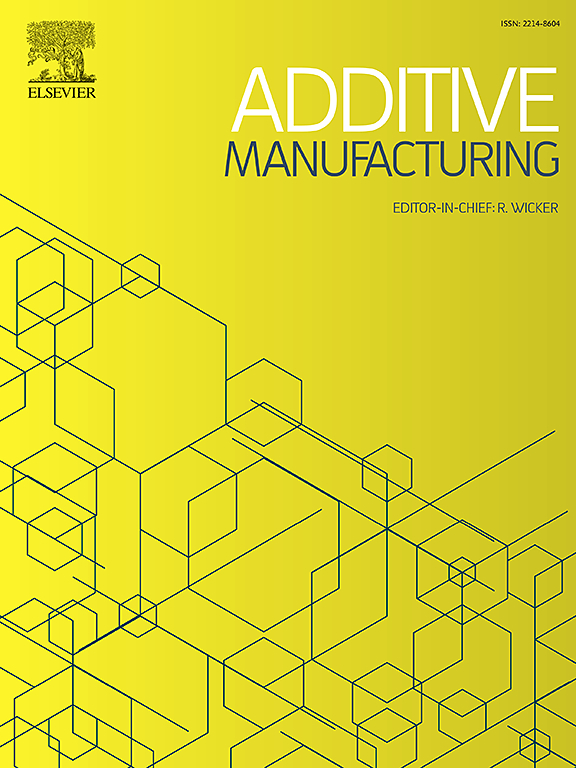A novel 3D printing scheme for lunar construction with extremely low binder utilization
IF 10.3
1区 工程技术
Q1 ENGINEERING, MANUFACTURING
引用次数: 0
Abstract
Lunar construction has become a multidisciplinary, cutting-edge, and strategic topic worldwide with additive manufacturing as a key technology to build required structures. Targeting the low strength or excessive terrestrial materials utilization in current lunar 3D printing, a novel printing scheme is proposed herein to balance the processability and strength using minimal binders. A printing system was designed based on powder extrusion and passive roll-pressing. Therein, a screw-blade module with 73 % of full blade length can efficiently extrude dry and damp powders. An adjustable roller-spring module is applied to reveal the significance of harder lunar regolith, larger roller and stiffer spring on the powder printing. Using the roller with 50 mm of diameter and 78 N of pressure, a dense print layer can be obtained with > 2 mm of layer thickness and 2–5 MPa of flexural strength. Through experimental results and mechanical analysis a quantitative powder-roller interaction is established. Also, this printing system supports both premix printing and dry printing. The former can use fewer binders as low as 4 wt%, while the latter enables 2.6 times and 3.8 times higher flexural and bonding strength respectively. This low-binder powder 3D printing scheme will bring more prospects and advancements for future lunar constructions.
求助全文
约1分钟内获得全文
求助全文
来源期刊

Additive manufacturing
Materials Science-General Materials Science
CiteScore
19.80
自引率
12.70%
发文量
648
审稿时长
35 days
期刊介绍:
Additive Manufacturing stands as a peer-reviewed journal dedicated to delivering high-quality research papers and reviews in the field of additive manufacturing, serving both academia and industry leaders. The journal's objective is to recognize the innovative essence of additive manufacturing and its diverse applications, providing a comprehensive overview of current developments and future prospects.
The transformative potential of additive manufacturing technologies in product design and manufacturing is poised to disrupt traditional approaches. In response to this paradigm shift, a distinctive and comprehensive publication outlet was essential. Additive Manufacturing fulfills this need, offering a platform for engineers, materials scientists, and practitioners across academia and various industries to document and share innovations in these evolving technologies.
 求助内容:
求助内容: 应助结果提醒方式:
应助结果提醒方式:


